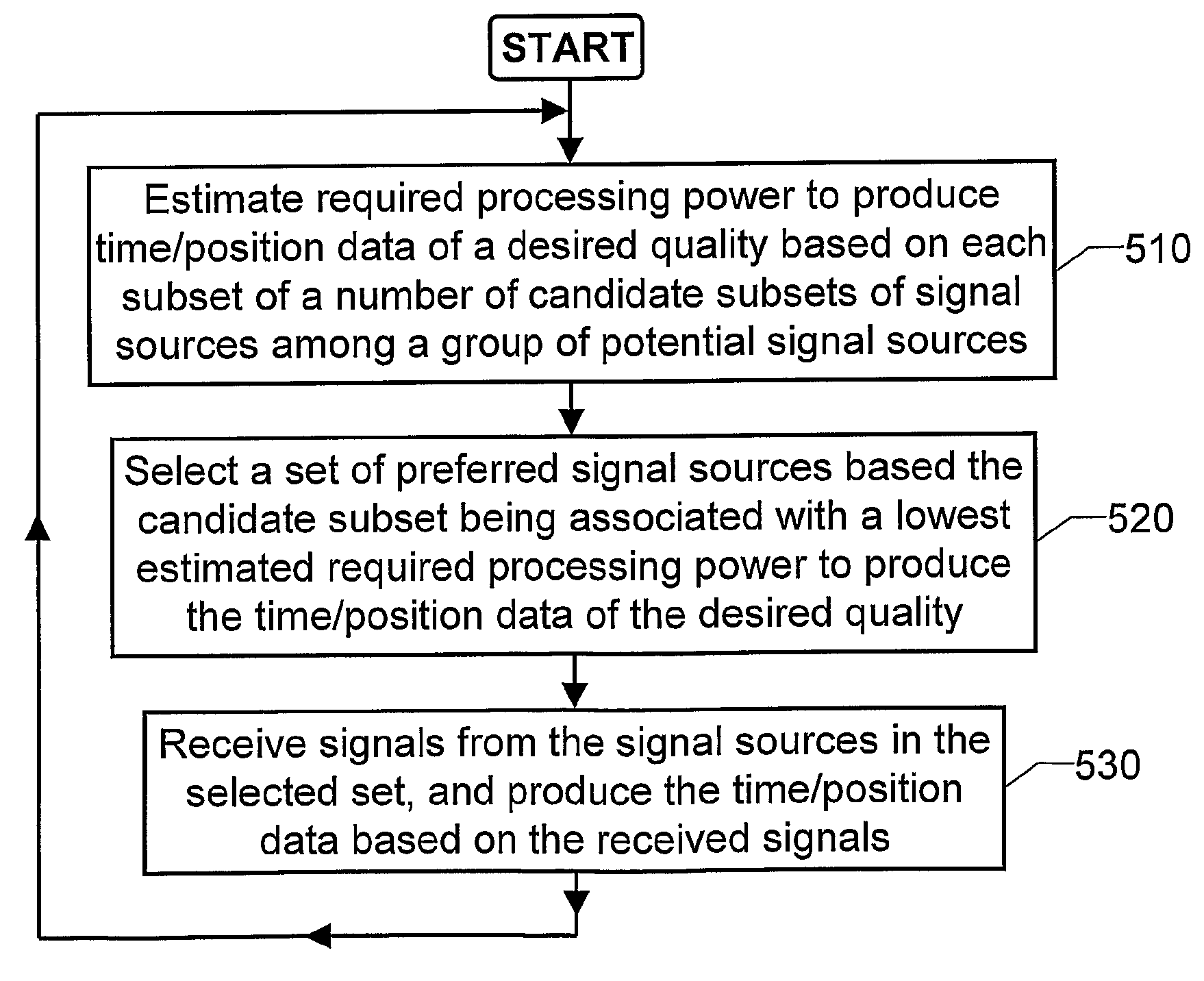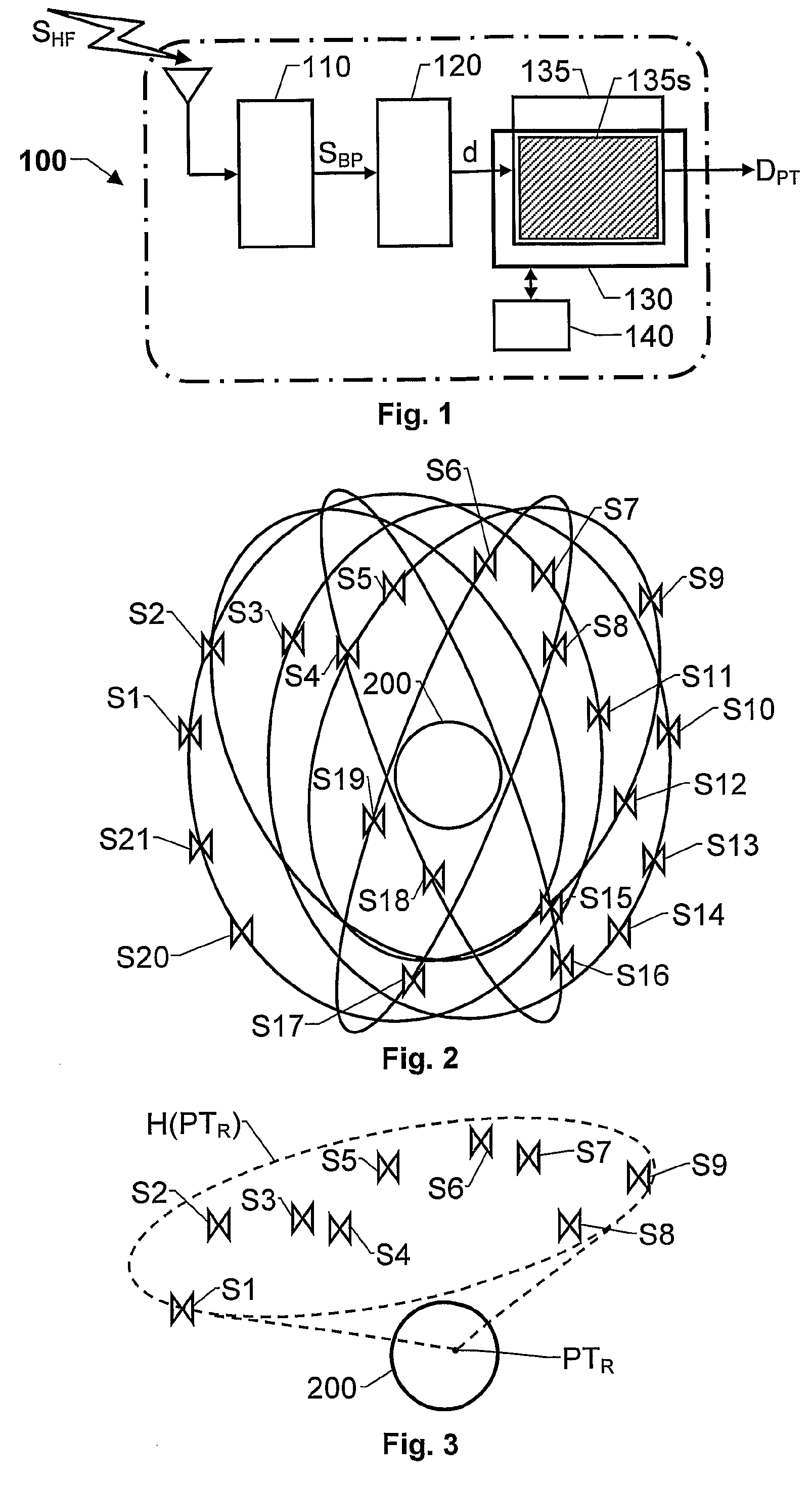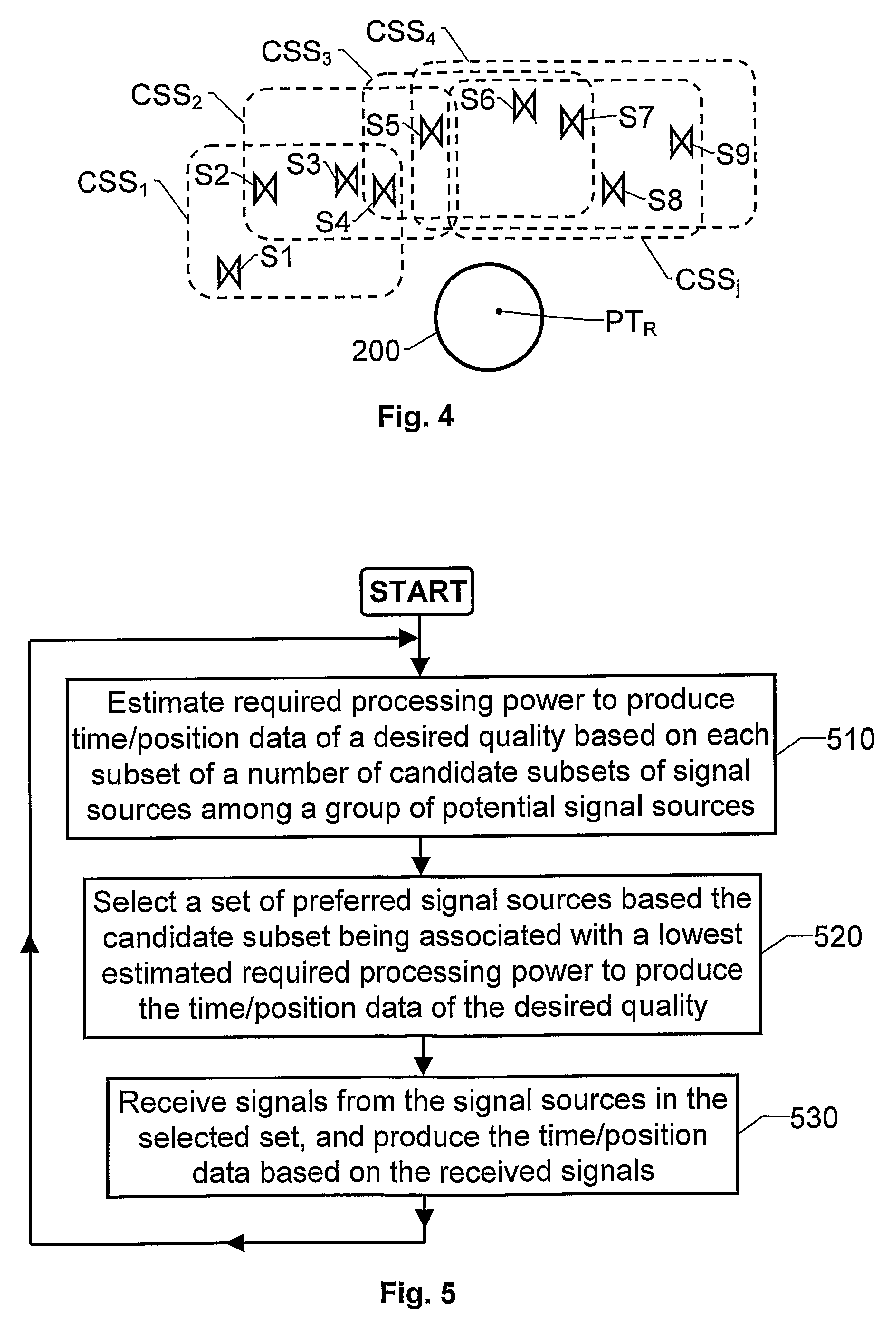Method and spread spectrum software receiver for satellite navigation
a software receiver and satellite navigation technology, applied in the field can solve the problems of affecting the performance affecting the reliability of satellite navigation software receivers, etc., and achieves high power efficiency.
- Summary
- Abstract
- Description
- Claims
- Application Information
AI Technical Summary
Benefits of technology
Problems solved by technology
Method used
Image
Examples
Embodiment Construction
[0030]FIG. 1 shows a block diagram of a spread spectrum receiver 100 according to one embodiment of the invention. The receiver 100 includes a radio front-end unit 110, an interface unit 120 and a radio signal processing unit 135. The receiver 100 preferably also includes a computer readable medium 140, such as a memory buffer, storing a program which is adapted to control the processing unit 135 to operate according to the proposed principle.
[0031]The radio front-end unit 110, in turn, has an antenna means adapted to receive radio signals SHF from a plurality of signal sources, for example a set of satellites belonging to one or more GNSSs. Therefore, the antenna means is capable of receiving radio frequency signals in at least one frequency band, e.g. the L1-, L2- and / or L5-bands, i.e. having spectra ranging from 1563 MHz to 1587 MHz, 1215 MHz to 1240 MHz and 1155 MHz to 1197 MHz respectively. Specifically, the radio front-end unit 110 is adapted to perform sampling and digitizing...
PUM
 Login to View More
Login to View More Abstract
Description
Claims
Application Information
 Login to View More
Login to View More - R&D
- Intellectual Property
- Life Sciences
- Materials
- Tech Scout
- Unparalleled Data Quality
- Higher Quality Content
- 60% Fewer Hallucinations
Browse by: Latest US Patents, China's latest patents, Technical Efficacy Thesaurus, Application Domain, Technology Topic, Popular Technical Reports.
© 2025 PatSnap. All rights reserved.Legal|Privacy policy|Modern Slavery Act Transparency Statement|Sitemap|About US| Contact US: help@patsnap.com



